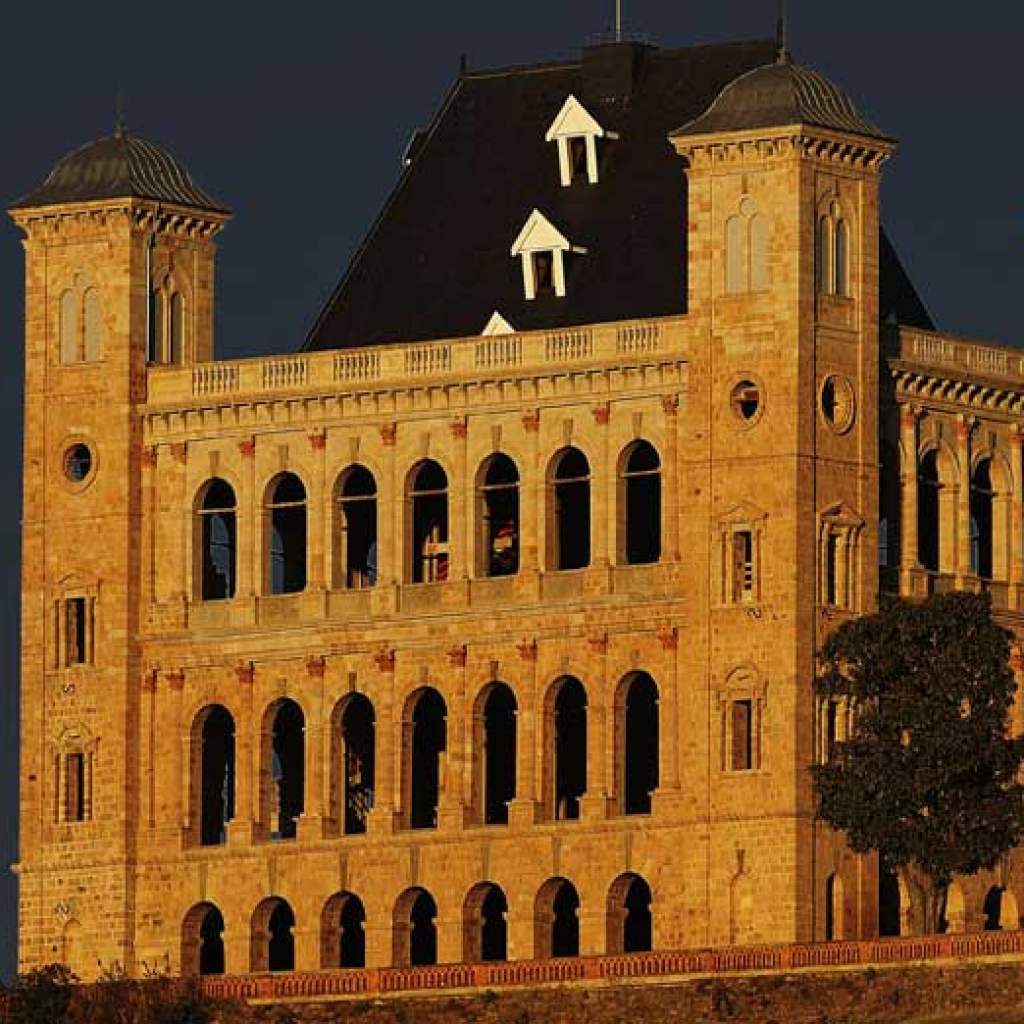On the highest hill of Antananarivo, Rova Manjakamiadana opens its doors to visitors. The French call the Palace of the Queen. The queen in question is undoubtedly the Queen Ranavalona I, sovereign who ruled the kingdom between Merina 1828 and 1861, and that, of his time, asked the building of the monument to the plans of the architect Jean Laborde.
At least two guides welcome you to lead you in the Palais, you describe each building and tell the story of the sovereigns who have lived there.
Sovereign that have succeeded
Other Queens that Ranavalona I reigned there. Citons or nièce Ranavalona II (1868-1883) who ordered the construction of the stone temple in the area of Rova, while, according to Malagasy tradition, Stone was a taboo but sacred material, reserved for the tombs and the dead, unlike wood. For the project is realized, so we had to lift the ban.
Ranavalona III (1883-1897) was the last to reign there. Rova was bombed by French guns 1895, the Queen dethroned and exiled in Algeria. Thus the palace passed into the hands of the colonizers. a mars 1897, it became a museum.
The Queen's Palace before building
Le fondateur du Rova de Manjakamiadana est le roi Andrianjaka (1610-1630). At & rsquo; origin, this was a spacious platform, which later became the basis of the royal garrison Merina, which has earned the name of Antananarivo, literally translates to "City of a Thousand" soldiers, à the capital of Madagascar.
Visiting the Rova of Antananarivo takes many forms. Upon entry, Portal architecture is noticed. This would be inspired by the Champs Elysees Arc de Triomphe. The eagle that sits on top of the portal is a symbol of strength for the Malagasy. Another statue is also visible in the same building. This is both a symbol of virility and fertility. The tradition is indeed a sovereign or sovereign must always be fertile. Also, all natives of the countries that enter the area of the palace must be circumcised. Moreover, they are.
